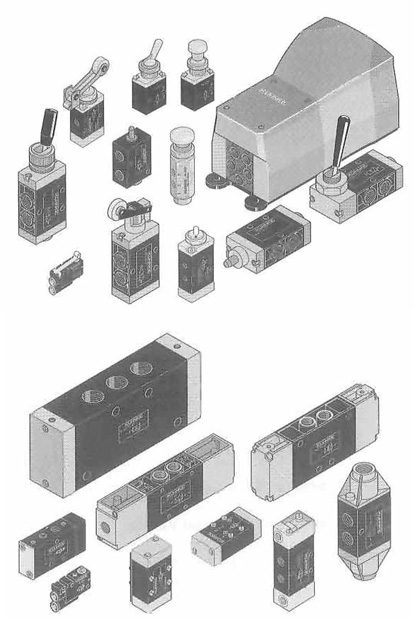What is a Pneumatic Valve?
Many different components control the rate, pressure, and amount of air that moves through a pneumatic control system. One of the most vital tools for these systems is a pneumatic valve. These valves have two specific contexts. Firstly, a pneumatic valve modulates and controls airflow within pneumatic systems. This is achieved by controlling the air source and regulating the passage of air as needed. In the other context, the air is used as the controlling mechanic on the valve. The media that flows through valve ports is not air (water or oil). Pneumatic valves provide flow control for the valve within this context, but the medium is not air.
Pneumatic Valves
Once you understand the general function of pneumatic valves, you can learn about the different types of valves and each function. No two valves are the same, so it is important to understand the basic differences at least.
 Four key characteristics classify pneumatic valves. These include:
Four key characteristics classify pneumatic valves. These include:
- The total number of exit and entry ports
- The total amount of flow paths and switching positions
- The position of the valve while in an un-actuated state
- The type of mechanism that is used for opening/closing ports
Each type of variation provides different performance characteristics. Often, pneumatic valves are broken down into four types, which include:
- Spring Offset Pneumatic Valve
- Two-Way Directional Control Pneumatic Valves
- Three-Way Directional Control Pneumatic Valves
- Four-Way Directional Control Pneumatic Valves
Getting the right valve is an essential part of running and maintaining pneumatic control systems. Do not make purchases haphazardly, and instead call the pros for advice.
Related Reading
- Selecting and Operating Valves
If you are uncertain about which pneumatic valves will work best for your system, please give us a call. - Maintaining Pneumatic Systems
- Basics of Compressed Air Valves


- Ellis/Kuhnke Controls
132 Lewis Street Unit A-2, Eatontown, N.J. 07724
Phone: 1-800-221-0714
Fax: 732-291-8154
Email: Info@ekci.com
- Home Pneumatic Controls Technical Info CAD Drawings Contact Us Pneumatic Timers Blog Site Map
